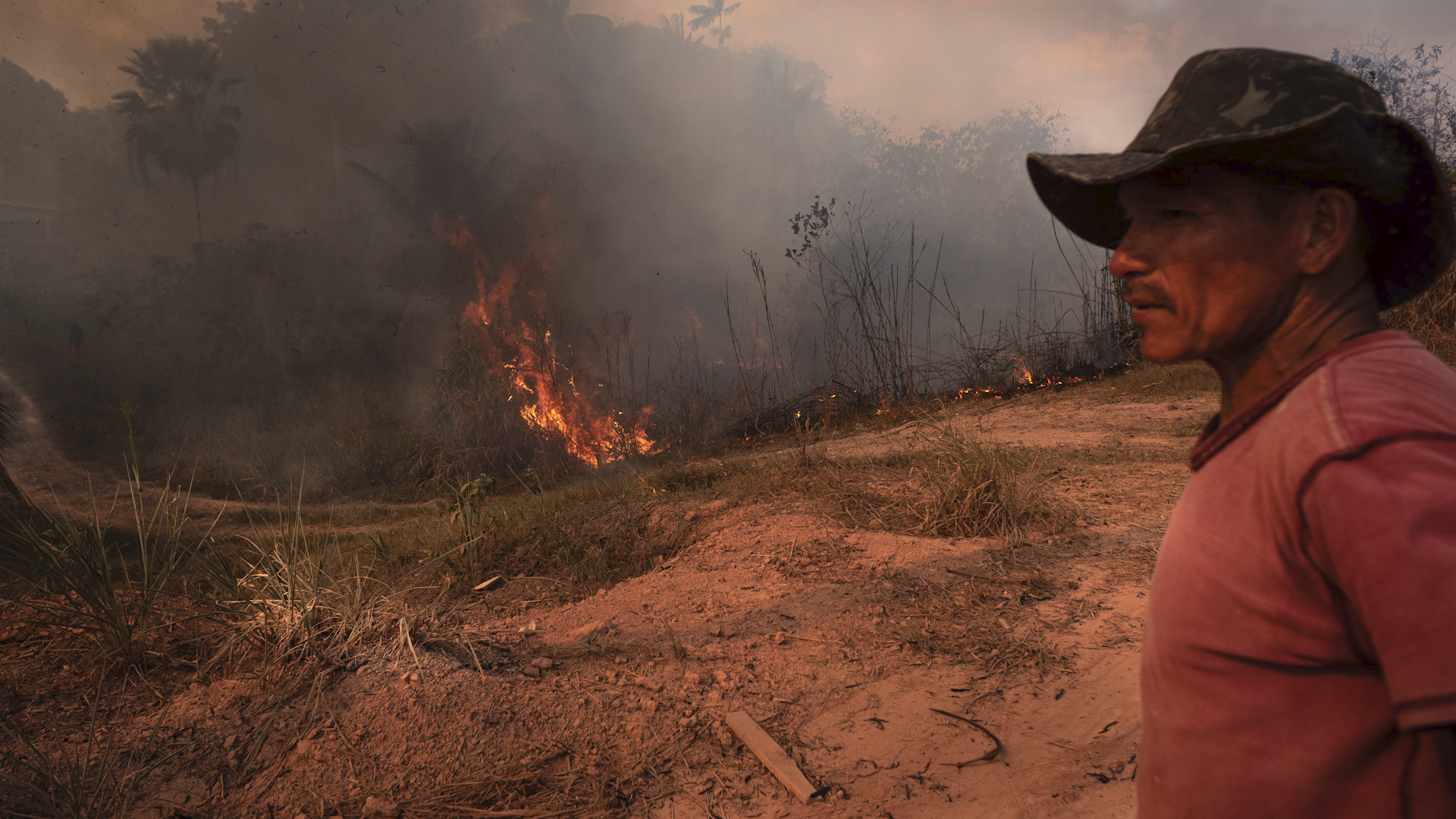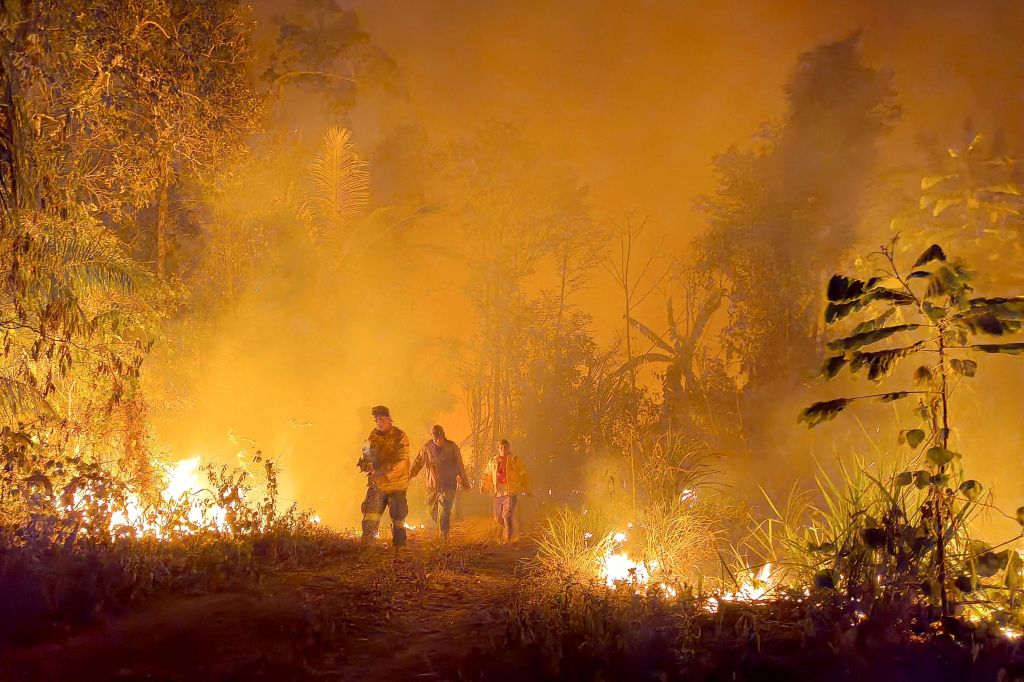
MIKAELA WEISSE
DIRECTOR | GLOBAL FOREST WATCH
“So Global Forest Watch tracks every year the amount of forest loss happening around the world.”
[LAUREN TAYLOR]
NEWLY RELEASED DATA FROM GLOBAL FOREST WATCH POINTED TO A MIXED OUTLOOK FOR TROPICAL FORESTS ACROSS THE WORLD.
THE WORLD SAW A LOSS OF 9.2 MILLION ACRES OF TROPICAL OLD-GROWTH FORESTS IN 2023 — AN AREA LARGER THAN THE STATE OF MARYLAND.
THE GOOD NEWS? THE LOSS OF THESE ECOSYSTEMS, VITAL FOR BOTH CARBON STORAGE AND BIODIVERSITY, ACTUALLY DECREASED 9% FROM THE PREVIOUS YEAR.
BRAZIL AND COLOMBIA MADE SIGNIFICANT PROGRESS, WITH BRAZIL SEEING A 36% REDUCTION AND COLOMBIA A 49% DECREASE IN PRIMARY FOREST LOSS. HOWEVER FOREST FIRES AND DEFORESTATION IN OTHER COUNTRIES, LIKE BOLIVIA AND LAOS, LAST YEAR OFFSET THE PROGRESS IN PROTECTING TROPICAL FORESTS.
MIKAELA WEISSE
DIRECTOR | GLOBAL FOREST WATCH
“This year we found really significant decreases in primary forest loss in Brazil and in Colombia, but unfortunately those decreases weren’t enough to actually reduce the overall rate of forest loss in the tropics. The decreases were counteracted by increases instead in countries like Bolivia, Nicaragua and Laos.”
LAUREN TAYLOR
FIRES AND DEFORESTATION ARE THE MAIN DRIVERS OF FOREST LOSS — FORESTS ARE CRUCIAL FOR ABSORBING CARBON DIOXIDE FROM THE AIR.
ACCORDING TO THE WORLD RESOURCES INSTITUTE FROM 2001 TO 2021, FORESTS UNDER THE STEWARDSHIP OF INDIGENOUS PEOPLES IN THE AMAZON HAVE BEEN PARTICULARLY EFFECTIVE CARBON SINKS — REMOVING ROUGHLY 370 MILLION TONS OF CO2 FROM THE ATMOSPHERE EVERY YEAR. THAT’S AS MUCH AS THE UNITED KINGDOM EMITS.
IN THE LAST 40-50 YEARS, ABOUT 17% OF THE AMAZON RAINFOREST HAS BEEN CLEARED, PRIMARILY FOR AGRICULTURE. SCIENTISTS CAUTION THAT DEFORESTATION EXCEEDING 20% COULD TRANSFORM THE DENSE FOREST INTO A SAVANNAH, POTENTIALLY RELEASING AROUND 99 BILLION TONS OF CO2—MORE THAN TWICE THE GLOBAL ANNUAL FOSSIL FUEL EMISSIONS.
MIKAELA WEISSE
DIRECTOR | GLOBAL FOREST WATCH
“Bolivia is interesting, there are a couple of different factors that play. Forest fires are a really big factor in Bolivia and have been in the past several years and this year, in particular, we are seeing fires pop up in areas where they haven’t been in the past.
And at the same time we are seeing a lot of agriculture continuing to come into the country and the government actually promoting that agriculture expansion in a lot of cases”
[LAUREN TAYLOR]
RESEARCHERS HAVE DISCOVERED THAT THE WORLD IS LIKELY TO NOT MEET A 2030 TARGET TO STOP AND REVERSE THE LOSS OF FORESTS CAUSED BY DEFORESTATION. IN 2021, OVER 145 COUNTRIES AND TERRITORIES COMMITTED TO THIS GOAL.








